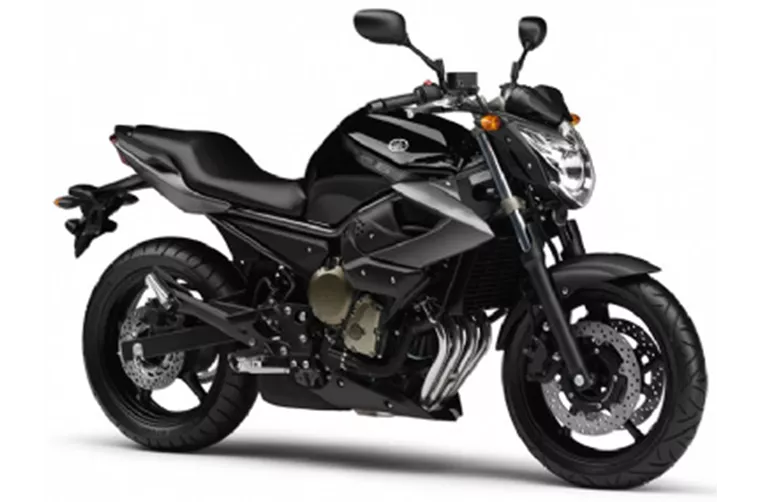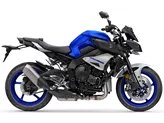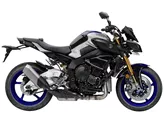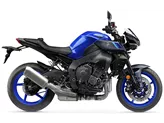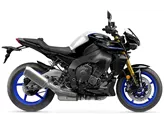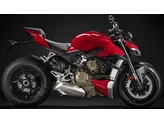Yamaha XJ6 2009 vs. Yamaha MT-10 2016

Yamaha XJ6 2009

Yamaha MT-10 2016
Overview - Yamaha XJ6 2009 vs Yamaha MT-10 2016
The Yamaha XJ6 model year 2009 and the Yamaha MT-10 model year 2016 are both naked bikes manufactured by Yamaha. While they share some similarities in terms of engine and drive train specifications, they also have distinct differences in various aspects.
In terms of engine power, the Yamaha XJ6 2009 has a power output of 78 HP, while the Yamaha MT-10 2016 boasts a more powerful engine with 160 HP. This significant difference in power output makes the MT-10 more suitable for riders who seek a more thrilling and high-performance experience.
Similarly, the torque of the two bikes also differs, with the XJ6 having 59.7 Nm of torque and the MT-10 having a higher torque of 111 Nm. This higher torque of the MT-10 provides better acceleration and a more responsive throttle, contributing to its strong character and agile nature.
Both bikes have four cylinders and liquid cooling systems, ensuring optimal engine performance and temperature regulation. However, the Yamaha XJ6 has a smaller engine displacement of 600cc, while the MT-10 has a larger engine displacement of 998cc. This larger displacement of the MT-10 allows for more power and torque, further enhancing its performance capabilities.

Yamaha XJ6 2009
In terms of suspension, the Yamaha XJ6 2009 is equipped with a telescopic fork front suspension, while the MT-10 2016 features an upside-down telescopic fork front suspension. The upside-down fork on the MT-10 provides better stability and improved handling, making it extremely agile and suitable for aggressive riding.
The chassis of the two bikes also differs, with the XJ6 having a steel frame and the MT-10 featuring an aluminum frame. The aluminum frame of the MT-10, known as Deltabox, is lighter and more rigid, contributing to the bike's overall agility and high-speed stability.
Both bikes have double disk front brakes, ensuring strong and reliable stopping power. The front tire diameter and rear tire diameter are the same for both bikes, measuring 17 inches. This standard tire size provides good grip and stability.

Yamaha MT-10 2016
In terms of dimensions and weights, the Yamaha XJ6 2009 has a slightly longer wheelbase of 1440mm, compared to the MT-10's wheelbase of 1400mm. The seat height of the XJ6 is 785mm, while the MT-10 has a higher seat height of 825mm. The fuel tank capacity is similar for both bikes, with the XJ6 having a capacity of 17.3 liters and the MT-10 having a capacity of 17 liters.
When it comes to strengths, the Yamaha XJ6 2009 is praised for its rider-friendly performance characteristics, optimal clutch, playful and lighter handling, comfortable seat, individual look, and high-quality build. On the other hand, the Yamaha MT-10 2016 is known for its CP4 engine, strong character, extremely agile nature, high-speed stability, strong brakes, and unmistakable sound.
However, the XJ6 2009 does have some weaknesses, including design components that are not too demanding and a torque development that may not be as impressive as some other bikes. The MT-10 2016 also has its weaknesses, such as poor comfort, limited wind protection, and a hard fit for some riders.
In conclusion, while both the Yamaha XJ6 2009 and the Yamaha MT-10 2016 are naked bikes with their own strengths and weaknesses, the MT-10 stands out with its significantly higher power and torque, as well as its agility and high-speed stability. The XJ6, on the other hand, offers a more rider-friendly and comfortable experience with its lighter handling and individual look. Ultimately, the choice between the two would depend on the rider's preferences and intended use.
Technical Specifications Yamaha XJ6 2009 compared to Yamaha MT-10 2016
Pros and Cons in comparison
Pros and Cons in comparison
Yamaha XJ6 2009
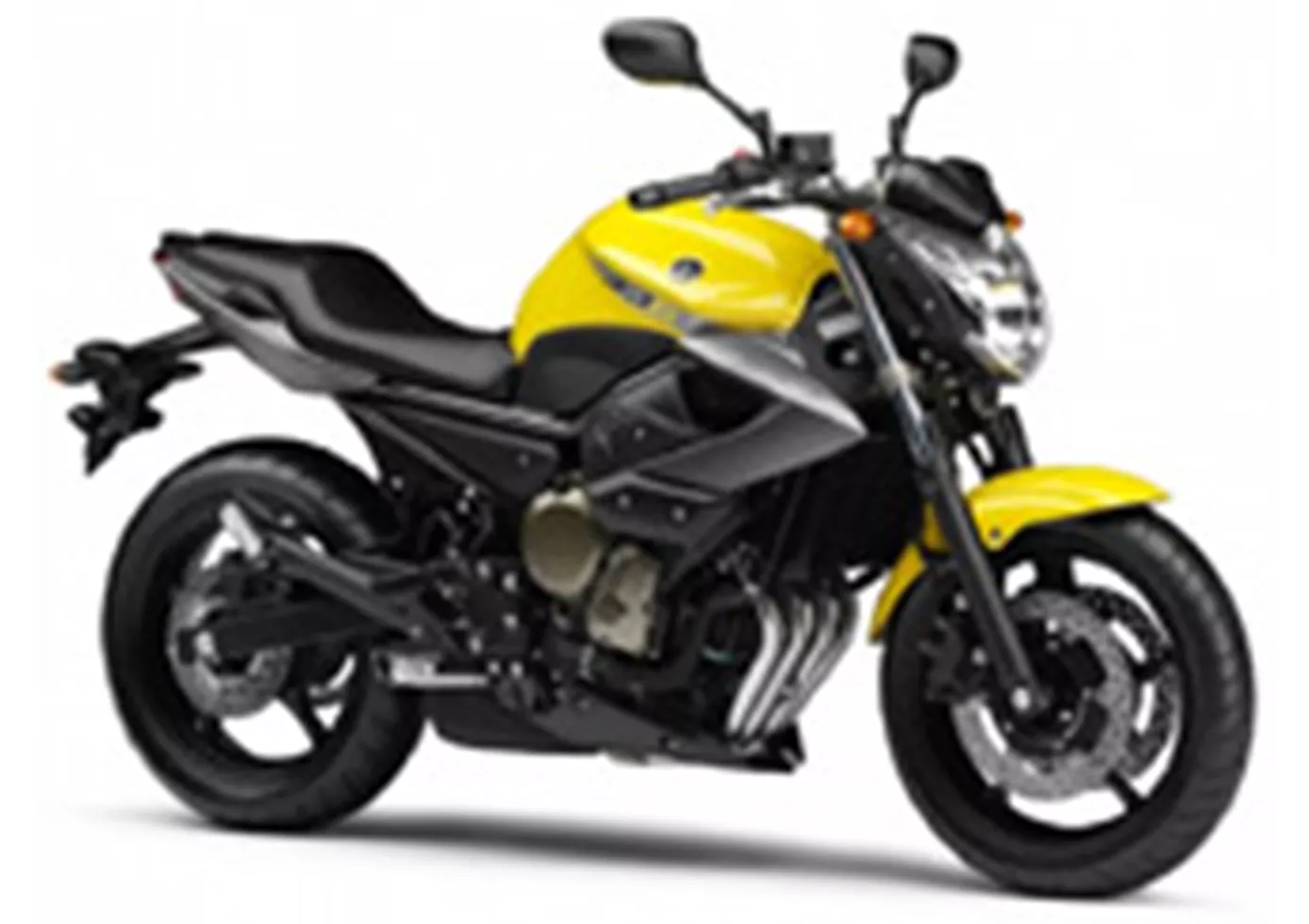
Despite the common basis, the XJ appears much younger and more aggressive. A mid-cass motorbike that by no means makes you feel mid-range. Except for the swingarm, the motorbike appears quite high-quality and cool. The bike is a little easier to handle than the Diversion.
Yamaha MT-10 2016

The short and stocky MT-10 is the furthest away from the R1 superbike of the renowned power naked bikes, both in terms of looks and chassis, but the heart of the MT-10 is directly descended from the racetrack weapon and fascinates with a uniquely raw sound and power from below thanks to the typical crank pin offset, which, with a modified firing order, ensures this unique character. The resulting 160 hp therefore only seem a little weak on paper compared to the more than 200 hp of the R1, in reality the MT-10 also ignites incredible fireworks. The suspension would probably be too soft for the race track, but it is just right for a country road fight, and the brakes do the same - probably only acceptable for the track, but perfect for the country road.
Price Comparison Avarage Market Price Yamaha XJ6 vs Yamaha MT-10
There are a few key differences between a Yamaha XJ6 2009 and a Yamaha MT-10 2016. In terms of price, the actual average price of a Yamaha MT-10 2016 is about 145% higher. A Yamaha XJ6 2009 experiences a loss of 210 GBP in one year and 20 GBP in two years of ownership. This is offset by a loss of 810 GBP and 1,870 GBP for a Yamaha MT-10 2016. Compared to Yamaha MT-10 2016 there are less Yamaha XJ6 2009 bikes available on the 1000PS.de Marketplace, specifically 6 compared to 7. It takes less time to sell a Yamaha XJ6 with 31 days compared to 97 days for a Yamaha MT-10. Since model year 2009 1000PS.de editors have written 4 reviews for the Yamaha XJ6 and 32 reviews for the Yamaha MT-10 since model year 2016. The first review for the Yamaha XJ6 was published on 13/11/2008 and now has more than 21,900 views. This compares to more than 20,700 views for the first review on Yamaha MT-10 published on 17/11/2015.
